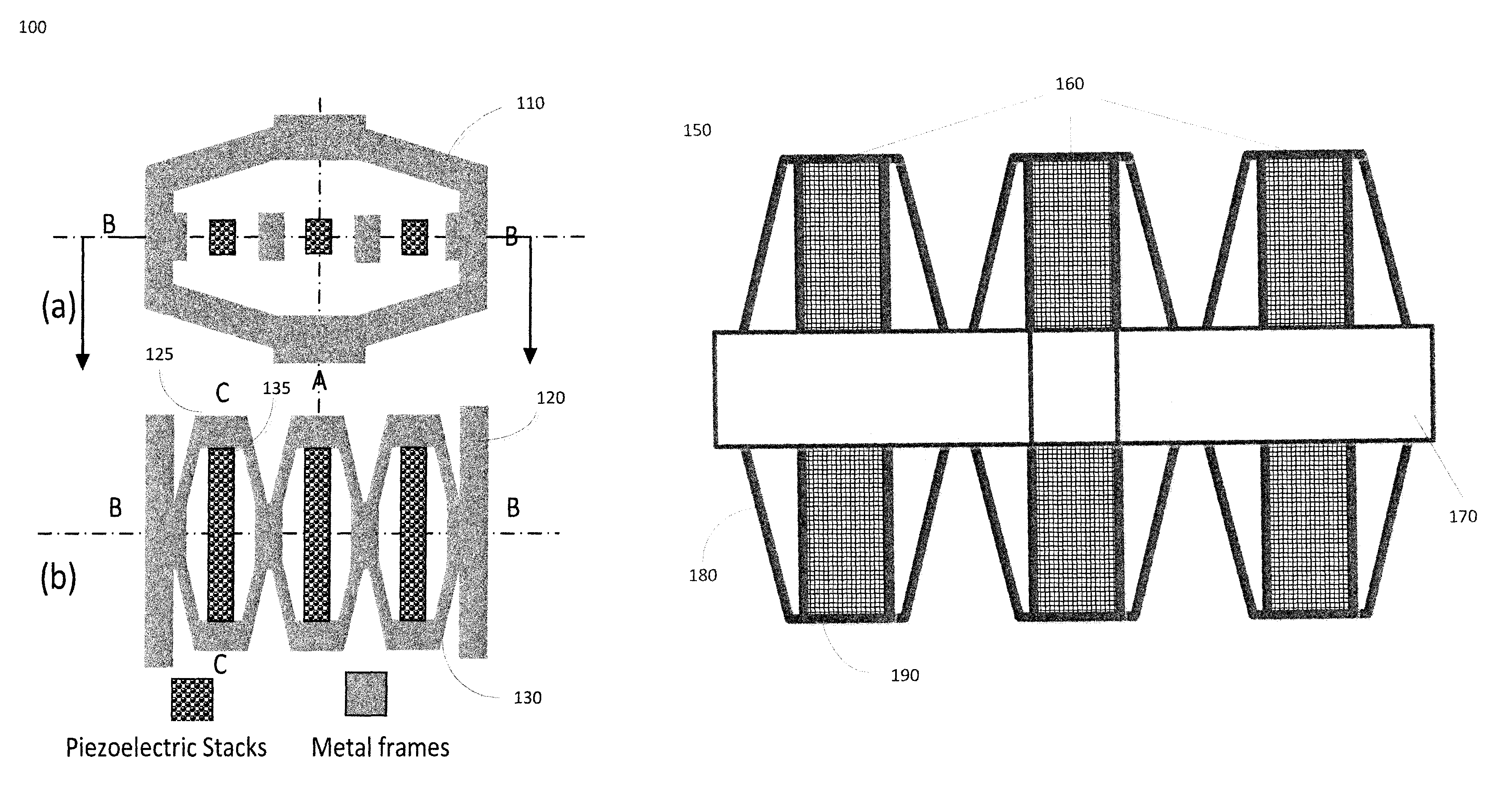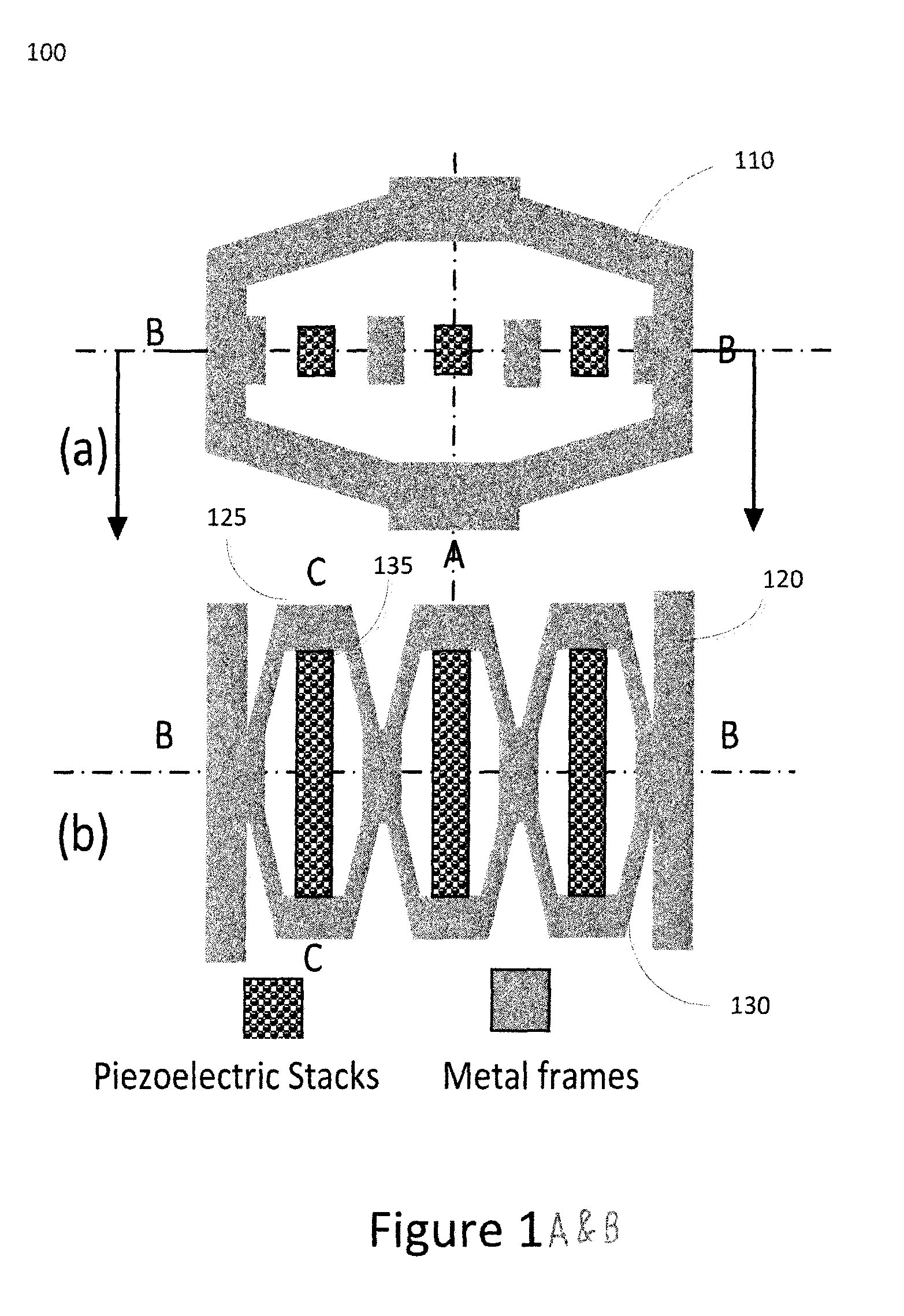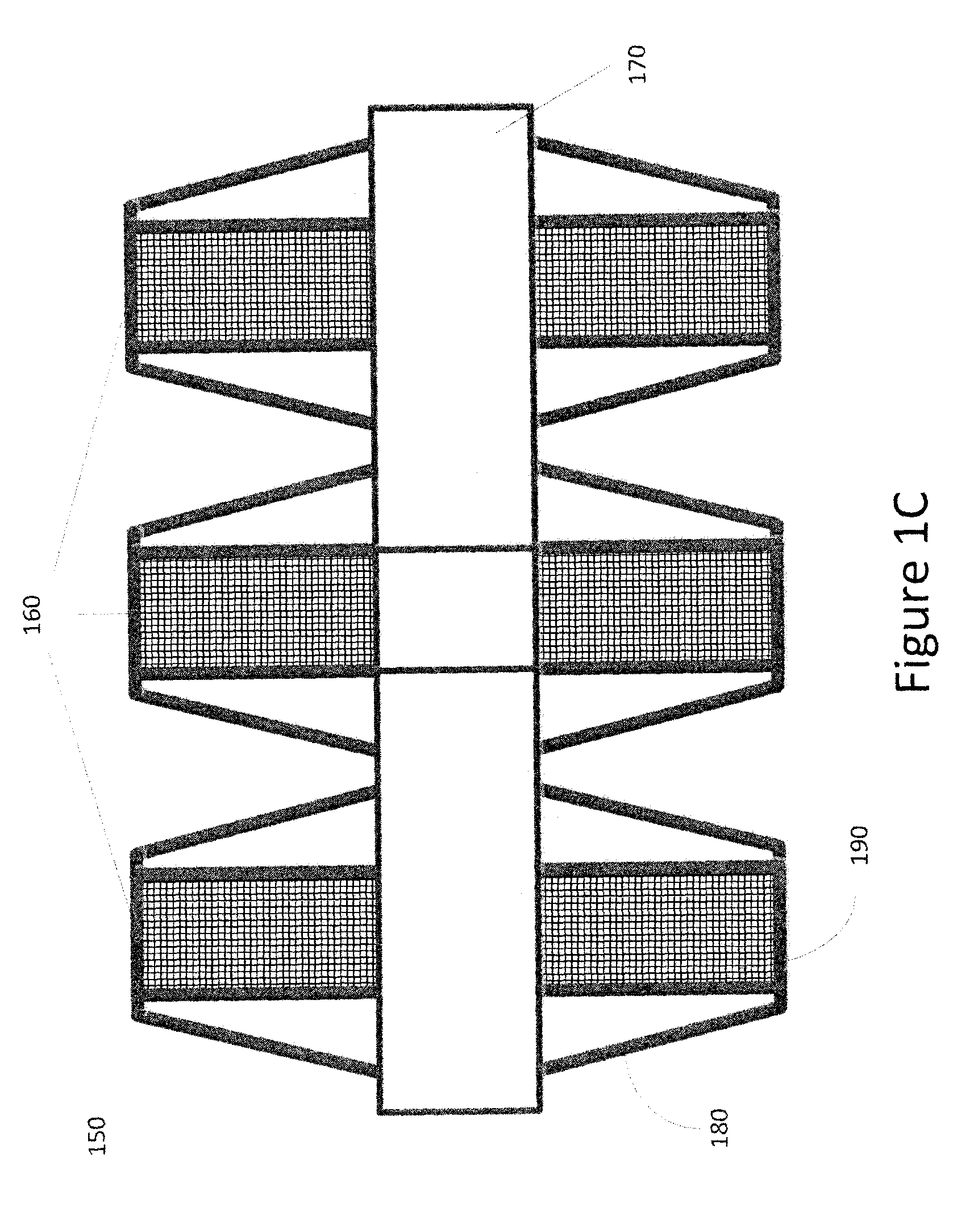Multistage force amplification of piezoelectric stacks
a piezoelectric stack and multi-stage technology, applied in piezoelectric/electrostrictive/magnetostrictive devices, piezoelectric/electrostriction/magnetostriction machines, electrical equipment, etc., can solve the problems of insufficient electric power harvesting, the inability of our soldiers to control the energy harvesting in military applications, and the inability to harvest enough electric power, etc., to achieve the effect of increasing the effective piezoelectric constant, increasing mechanical energy input stiff input p
- Summary
- Abstract
- Description
- Claims
- Application Information
AI Technical Summary
Benefits of technology
Problems solved by technology
Method used
Image
Examples
Embodiment Construction
[0023]In this section, the structure of a MFAPEHT and the multiple stages of force amplification mechanism are described first. The theoretical models for force amplification, piezoelectric constant amplification, and vibration energy harvesting for the MFAPEHT are developed. Then, the impedance issues to enhance the mechanical energy input to the MFAPEHT are briefly addressed. Finally, the experimental validation for MFAPEHT is presented.
[0024]FIGS. 1A-C shows an exemplary two-stage force amplification of PEHT (TSFAPEHT) (100, 150). FIG. 1(a) is a front cross section view of the TSFAPEHT and FIG. 1(b) is a top cross section view. The TSAFAPEHT includes an outer flextensional casing structure 110 (120 viewed in the top cross section view in FIG. 1(b)that surrounds one or more cells 130. Each cell includes a flextensional cell structure 125 that may be made of a metal frame that surrounds a piezoelectric stack 135. In one embodiment the piezoelectric stack 135 may be a multilayer sta...
PUM
 Login to View More
Login to View More Abstract
Description
Claims
Application Information
 Login to View More
Login to View More - R&D
- Intellectual Property
- Life Sciences
- Materials
- Tech Scout
- Unparalleled Data Quality
- Higher Quality Content
- 60% Fewer Hallucinations
Browse by: Latest US Patents, China's latest patents, Technical Efficacy Thesaurus, Application Domain, Technology Topic, Popular Technical Reports.
© 2025 PatSnap. All rights reserved.Legal|Privacy policy|Modern Slavery Act Transparency Statement|Sitemap|About US| Contact US: help@patsnap.com



